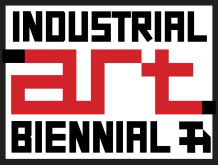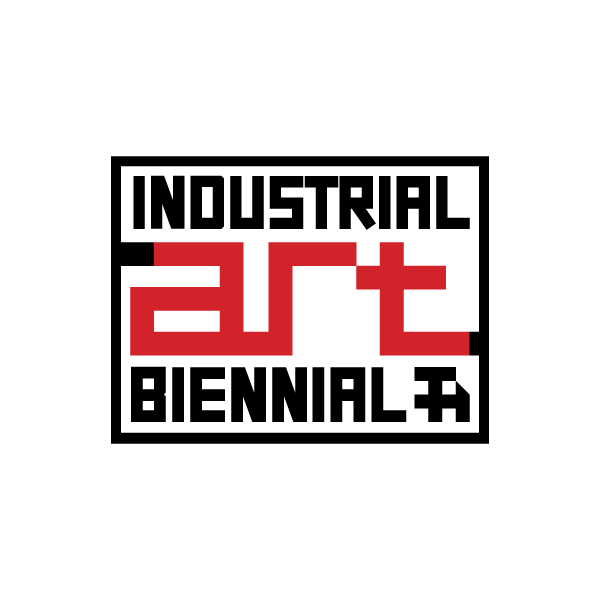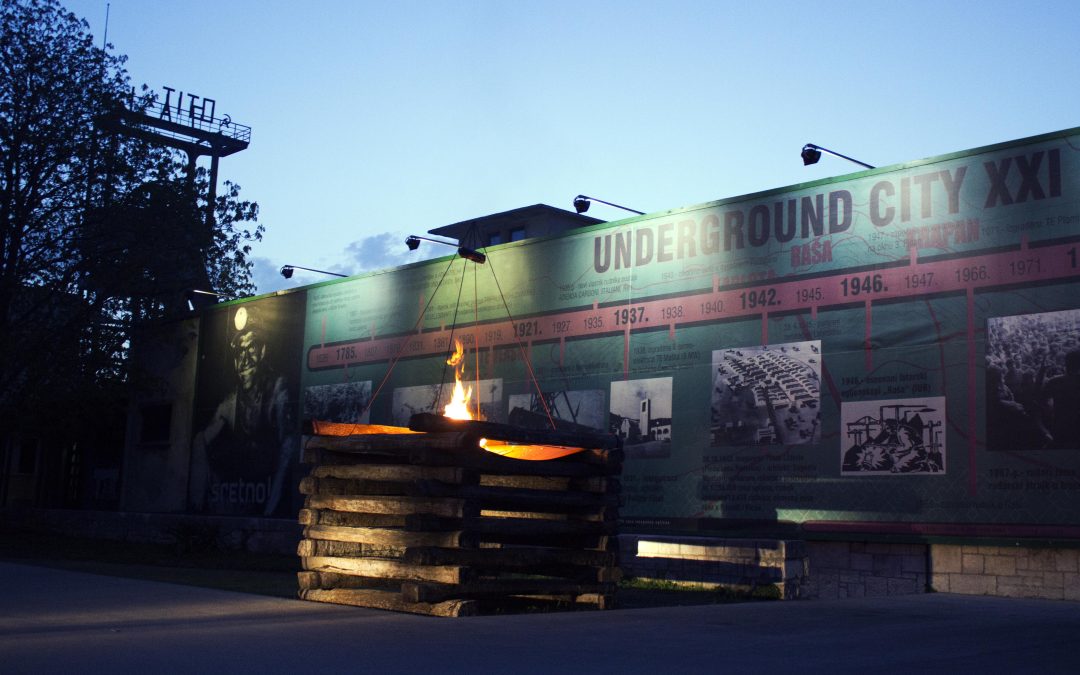
[HR] 3. Bijenale industrijske umjetnosti (IAB 2020) „Ride into the Sun“/ „Ravno u Sunce“
-u sklopu projekta „Rijeka – Europska prijestolnica kulture 2020“-

Kustosi: Branka Benčić (HR), Gerald Matt (AT), Ksenija Orelj (HR), Christian Oxenius (DE/IT)
Krajem srpnja/početkom kolovoza 2020. godine otvara se 3. Bijenale industrijske umjetnosti, koje će trajati 2 mjeseca, ponovno u sklopu projekta “Rijeka 2020 – Europska prijestolnica kulture” i njegova dva od ukupno sedam međuovisnih programskih pravaca: “Doba moći” i “Dopolavoro”. Nastavljajući putanju naznačenu prethodnim izdanjima (2014./2016./2018.), ono će ponovno reflektirati pojave koje su oblikovale društveni i kulturni pejzaž Istre i Rijeke. Bijenale industrijske umjetnosti je manifestacija suvremenih umjetničkih praksi koju je osnovao umjetnički kolektiv Labin Art Express kao eksperimentalnu platformu za realizaciju njihova fundamentalnog projekta: izgradnja futurističkog Podzemnog grada 150 m ispod površine zemlje u svrhu revitalizacije bivših istarskih ugljenokopa u Labinu i Raši, koja je započela ove godine rekonstrukcijom izvoznog tornja okna Podlabin – “šohta”.
U svom najnovijem izdanju Bijenale će biti strukturirano u tri geografski odvojene, ali tematski međusobno povezane izložbene cjeline: Labin s Lamparnom i susjednom, rudarskom Rašom funkcionira kao polazišna točka i svojevrsno središte Bijenala iz kojeg se razvija i u druge gradove – Rijeku i Opatiju (nepotvrđeno), te Vodnjan i Pulu.
Oko tridesetak radova hrvatskih i inozemnih umjetnika, od kojih će veći dio nastati posebno za Bijenale tijekom umjetničkih rezidencija učesnika u ovoj i idućoj godini, činiti će kompleksnu konstelaciju koja se bavi propitivanjem odnosa između umjetnosti i društva, s naglaskom na povijesnoj, kulturnoj, društvenoj i političkoj specifičnosti gradova u kojima će se odvijati, razvijajući i razotkrivajući skrivene isprepletene kontekste, identitete i narative koji odjekuju u pozadini, kako bi povezao i artikulirao niz pitanja koja se u tako postavljenim odnosima nameću.
Izložba u Labinu baviti će se mogućnostima materijalizacije utopije Podzemnog grada kao prostora potencijala u dobu snažnog utjecaja de-industrijalizacije. Istovremeno, izložba se odmiče od fundamentalne kritike utopije kao totalitarističke vizije koja stoji nasuprot “stvarnosti” svijeta u kojemu je različitost ključni faktor očuvanja života. Izložba u Puli bavit će se odnosom politike i estetike, antičkim nasljeđem grada i turizmom, položajem filmske industrije kao aparatusa moći, kao i deindustrijalizacijom u vidu nedavno neslavno propale brodograđevne industrije. Gašenje brodogradilišta i neminovni pokušaj njegove “prekvalifikacije” u primarno turističku destinaciju, odnosno problem nestajanja rada i proizvodnje, čvrsto povezuje Pulu s Rijekom gdje izložba u MMSU ima za cilj prikazati alternativne koncepte i modele rada u doba tranzicije industrijskog u informatičko društvo, poput pobune protiv imperativa prekomjernog rada i neprekidnog natjecanja kroz prakticiranje slobodnog vremena, inercije, odugovlačenja i apstinencije od rada.
Osim navedenih lokalnih i regionalnih specifičnosti, 3. Bijenale baviti će se i detektiranjem dinamike globalizacije, digitalizacije, automatizacije, eksploatacije, logike novog, informatičkog kapitalizma i klimatskih promjena, koje zajedno s jačanjem konzervativnih i desnih političkih opcija diljem Europe dramatično dovode u pitanje današnji svijet, kao i dosadašnji način života i rada. Dijalektika stvarnosti i utopije, nostalgije i napretka, straha i nade, gubitka “dobrih starih vremena” i osvajanja “novog vrlog svijeta”, razgraničenje i otvorenost, otpor i promjene, sve više određuju život i njegove lomove.
Naziv 3. Bijenala “Ride into the Sun”, preuzet od pjesme legendarnih Velvet Undergrounda i slobodno preveden kao “Ravno u Sunce”, utjelovljuje imanentnu težnju za boljim svijetom i životom. To je vožnja koja može završiti ugodnim snom o suncem obasjanoj Arkadiji, miroljubivom i prosperitetnom društvu idiličnog života, ili noćnom morom paklenog svijeta prepunog ljudskih i prirodnih katastrofa. Stoga, ovo Bijenale ne podupire ideju “podzemlja” u svome ideološkom smislu, kao alternativu “nebesima”, već u stvarnoj, fizičkoj formi istraženog životnog prostora, kojemu, paradoksalno, posvećujemo daleko manje pažnje nego nepoznatom svemiru.
Upravo svjedočimo svojevrsnom “povlačenju iz povijesti”, napuštanju progresivnog i utopijskog povijesnog nasljeđa modernizma, solidarnosti i razvoja. U ovom trenutku velike društvene regresije, koja obilježava europski i širi internacionalni kontekst, 3. Bijenale industrijske umjetnosti otvara pozicije promišljanja novih horizonata koji će nadrasti atmosferu fragmentacije i osjećaj gubitka nade.
RIDE INTO THE SUN (Velvet Underground)
Tražim drugo mjesto
Da budem netko drugi
Tražim drugu priliku
Za vožnju u Sunce
Branka Benčić: nezavisna kustosica i povjesničarka umjetnosti, umjetnička voditeljica APOTEKE – Prostora za suvremenu umjetnost, Vodnjan. Kao kustosica realizirala više od 50 skupnih i 100 samostalnih izložbi u Hrvatskoj i inozemstvu, povjerenica i kustosica Hrvatskog paviljona na Venecijanskom bijenalu (2017.), kustoska savjetnica Hrvatskog paviljona na Venecijanskom bijenalu arhitekture (2018), članica je hrvatske sekcije AICA (Međunarodno udruženje likovnih kritičara).
Gerald Matt: direktor Umjetničkog instituta u Beču, kustos i kulturni menadžer, izvanredni profesor teorije umjetnosti i umjetničkog menadžmenta na Sveučilištu primijenjenih umjetnosti u Beču, bivši direktor Kunsthalle Beč (1996.-2012.), član vijeća muzeja u Bolzanu i Bolonji te privremenog Kunsthalle Berlin, autor je više knjiga o umjetnosti i upravljanju muzejima.
Ksenija Orelj: viša kustosica u riječkom Muzeju moderne i suvremene umjetnosti (MMSU) gdje se posebno bavi eksperimentalnim pristupima retrospektivnim izložbama (post) konceptualnih umjetnika, do 2008. kustosica u Pomorskom i povijesnom muzeju Hrvatskog primorja, članica je hrvatske sekcije AICA (Međunarodno udruženje likovnih kritičara).
Christian Oxenius: voditelj istraživanja u Međunarodnom udruženju bijenala (IBA – International Biennial Association), neovisni kustos, autor i istraživač koji trenutno živi i radi u Ateni, jedan od kustosa Atenskog bijenala 2013, član niza međunarodnih žirija uključujući i “Nagrada Enrico Marinelli”, 2018. godine izdaje svoj prvi roman „Iskustvo suvremene umjetnosti. Putovanje nadahnuto ‘Planinom Analog’ Renea Daumala“.
Partneri: Arheološki muzej Istre, Povijesni i pomorski muzej Istre, MMSU Rijeka
3. Bijenale industrijske umjetnosti (IAB 2020) Upravlja i vodi Labin Art Express XXI:
Dean Zahtila, Predsjednik i Damir Stojnić, Umjetnički voditelj

[ENG] The 3rd Industrial Art Biennial (IAB): „Ride into the Sun“
– a part of “Rijeka 2020 – European Capital of Culture” –

Curated by: Branka Benčić (HR), Gerald Matt (AT), Ksenija Orelj (HR), Christian Oxenius (DE/IT)
The 3rd Industrial Art Biennial (IAB) will open late July/early August 2020 and will last for two months, again as part of the project Rijeka 2020 – ECoC and its two out of seven interdependent programming lines (so called Flagships): “Times of Power” and “Dopolavoro” (Italian term for “time after work”). Continuing the path set by previous biennials (2014/2016/2018), it will again reflect the phenomena that shaped the social and cultural landscape of Istria and Rijeka. IAB is a contemporary art exhibition founded by the artistic collective Labin Art Express as an experimental platform for the realization of their fundamental project: the revitalization of the former Istrian Coalmines in Labin and Rasa through the construction of the futuristic Underground City XXI, 150m below the surface of the earth, which commenced this year with the reconstruction of the export tower of the Labin’s mine (“Schacht”).
The new edition of IAB will be structured into three geographically separate but thematically interconnected exhibition complexes: Labin, with the Cultural Centre ‘Lamparna’ and the neighboring mining town of Rasa, functions as a starting point and the center of the Biennale from which it expands toward other cities – Rijeka and Opatija (not yet confirmed), Vodnjan and Pula.
Approximately 30 works by Croatian and international artists, most of which will be produced especially for the 3rd IAB during the artistic residences of the participants in this and the following year, will compose a complex constellation that questions the relationship between art and society, with an emphasis on historical, cultural, social and the political context of the cities in which it will be held. In order to connect and articulate a number of issues that arise from such relationship, the 3rd IAB will develop and explore hidden intertwined contexts, identities and narratives that echo in the background.
The exhibition in Labin will engage with the possibilities of materializing the utopian Underground City as a space of potential in an era heavily influenced by deindustrialization. At the same time, the exhibition departs from a fundamental critique of utopias as totalitarian visions juxtaposed to the “reality” of a world in which diversity is a key factor in the preservation of life. The exhibition in Pula will question the relationship between politics and aesthetics, its ancient heritage and tourism, the position of the film industry as an apparatus of power, as well as deindustrialization, especially the recent bitter end of the shipbuilding industry. The shutting down of the shipyard and the inevitable attempt of its “conversion” into a primarily touristic destination, as well as the broader problem of the disappearance of labor and production, strongly link Pula with Rijeka. The exhibition in the Rijeka Museum of Modern and Contemporary Art will present alternative concepts and models of labor in the current age of transition from industrial to IT society, like the rebellion against the imperatives of overtime labor and continuous competition by using free time, inertia, procrastination and abstinence from work.
Besides the aforementioned local and regional specificities, the 3rd IAB will also investigate the dynamics of globalization, digitization, automation, exploitation, the logic of the new IT
capitalism and the way climate change, along with the strengthening of conservative and rightwing political options across Europe, put the modern world and contemporary way of life and work radically into question. The dialectics of reality and utopia, nostalgia and progress, fear and hope, the loss of the good old world and the conquest of the brave new world, delimitation and openness, resistance and change increasingly determine life and its fractures.
The title “Ride into the Sun”, taken from the eponimous song by the legendary Velvet Underground and loosely translated into Croatian as “Straight into the Sun”, incorporates our immanent desire for another better world and life. It is a ride which can end in a pleasant dream of a sunlit Arcady – a peaceful and prosperous society with an idyllic life – or in the nightmare of a world destroyed by numerous human and natural disasters. This IAB supports the idea of “the underworld” not in its ideological sense, as an alternative to “the heavens”, but in the actual, physical form, which is already available as a possible habitat and to which, paradoxically, we humans devote much less attention than to the unknown universe.
We are witnessing a kind of a “withdrawal from history”, the abandonment of the progressive and utopian historical legacy of modernism, solidarity and development. At this moment of great social regression that defines both the European and wider international context, the 3rd IAB opens up a perspective to reflect upon new horizons that can overcome an atmosphere of social fragmentation and a feeling of hopelessness.
RIDE INTO THE SUN (Velvet Underground)
Looking for another place
Someone else to be
Looking for another chance
To ride into the Sun
Branka Bencic: Independent Curator and Artistic Director at APOTEKA – Space for Contemporary Art, Vodnjan. Curator of Croatian Pavilion at the 57th Venice Biennale (2017), and curatorial advisor to the Croatian Pavilion at the Venice Biennale of Architecture (2018). Curated numerous group and solo exhibitions, screening programs at museums, galleries and film festivals in Croatia and internationally, a member of the Croatian section of AICA (The International Association of Art Critics.
Gerald Matt: Director of Art Institute Vienna, curator and cultural manager, associate professor of art theory and art management at the University of Applied Arts Vienna, former Director of Kunsthalle Wien (1996–2012), committee member of the museums in Bolzano and Bologna and of the temporary Kunsthalle Berlin, author of several books on art and museum management.
Ksenija Orelj: Senior Curator at the Rijeka Museum of Modern and Contemporary Art ( MMSU) specialized in experimental approaches to retrospective exhibitions by (post)conceptual artists, curator at the Maritime and Historical Museum of Croatian Littoral (till 2008), a member of the Croatian section of AICA (The International Association of Art Critics).
Christian Oxenius: Head of Research of IBA (International Biennial Association), independent curator, author and researcher living in Athens, co-curator at the Athens Biennial 2013, a member of numerous international juries, including the “Premio Enrico Marinelli”. His first novel “A contemporary art experience. A journey inspired by Rene Daumal’s ‘Mount Analogue’” was published in 2018.
Partners: Archaeological Museum of Istria, Historical and Maritime Museum of Istria, Museum of Modern and Contemporary Art Rijeka
The 3rd Industrial Art Biennial is managed and led by Labin Art Express XXI:
Dean Zahtila, President & Damir Stojnić, Artistic Director

